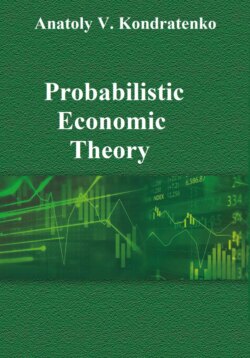Читать книгу Probabilistic Economic Theory - Anatoly Kondratenko - Страница 8
PART A. The Agent-Based Physical Modeling of Market Economic Systems
CHAPTER I. Fundamentals of the Method of Agent-Based Physical Modeling
2. The Main Paradigm of Physical Economics
ОглавлениеFor the achievement of larger clarity, let us again mention the main idea in physical economics regarding the use of analogies with physics. For this purpose, we once more express the thought of the main paradigm of physical economics as follows: physical systems consist of atoms. As was well known long ago, all that the physical systems do, atoms do. Market systems consist of market agents, buyers and sellers. And it is also known that all that the markets do, the market agents do. Both the physical and market economic systems are the complex dynamic systems, whose dynamics are determined by interaction between the elements of the system and their interaction with the environment in the widest sense of this notion. In our view, the very existence of such structural and dynamic similarity gives rise to the possibility, in principle, of building formal, many-agent physical economic models by analogy with the theoretical models of the many-particle physical systems, for example, of polyatomic molecules. It is here that the physical economic model could include all basic concepts and principles which define the work of the economy. As a result, it could sufficiently, simply, and adequately describe both the main structural features and principal dynamic characteristics of the economy being modeled, a target at which this study is precisely aimed, since no model can immediately describe everything completely. The study of economic systems by means of physical modeling must be carried out gradually, step by step, incorporating into the model ever finer effects and properties in the way that theoretical physics has done over the course of theoretical studies of complex physical systems. Thus, physical economics borrows formal approaches and model structures from theoretical physics. In other words, physical economics uses the very body or framework of the theoretical models of the many-particle systems, but not the results of theoretical studies of the concrete real physical systems. Namely this is the essence of physical modeling of economic systems. In conclusion, the obvious structural and dynamic analogy of the many-agent economic systems with the many-particle physical systems is basic to the formulation of fundamentals of the method of the agent-based physical modeling of the many-agent market economic systems in the formal economic space, and eventually, of the five general principles of physical economics as well as probabilistic economic theory.
